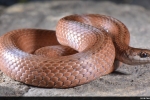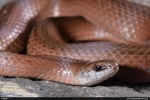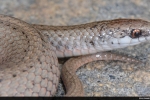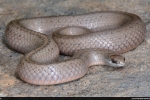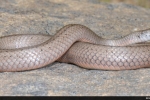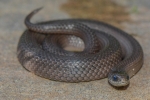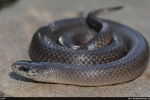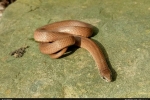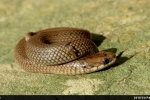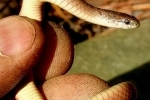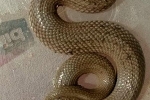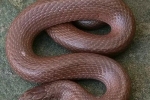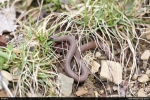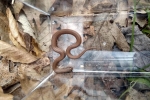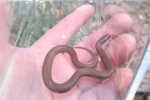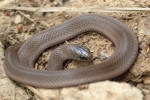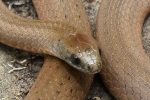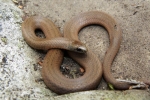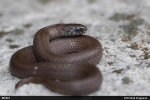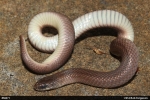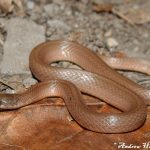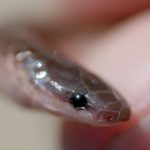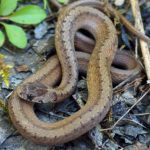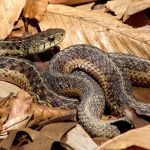Mountain Earthsnake
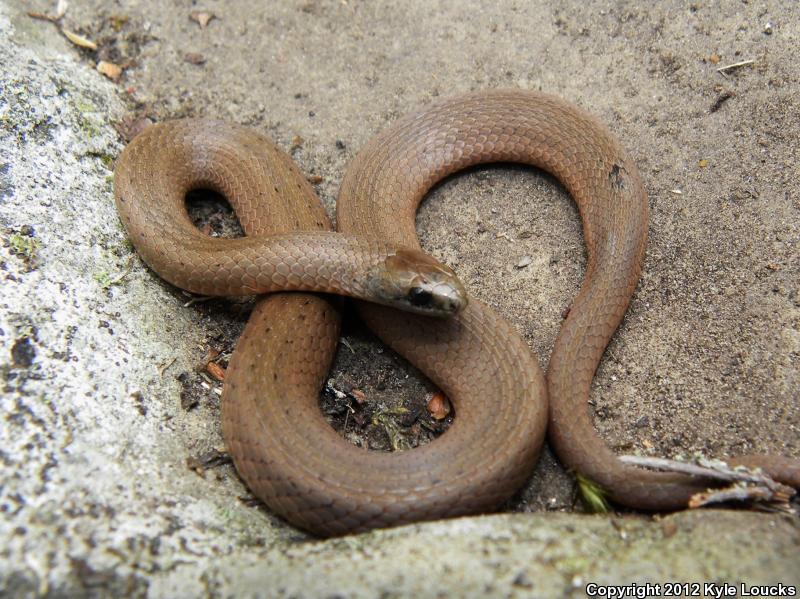
Scientific Name: Virginia pulchra
Size: 7-13 inches (18-33 cm) in length
Status: Species of special concern
PAHERP Resource: Have you seen me? Mountain Earth Snake
Habitat:
Hardwood or mixed hardwood – conifer forest in upland regions. Steep hillsides with rocky cover and second growth vegetation. Mainly found under rocks.
Description:
Small fossorial species mostly plain gray or reddish brown with scattered small black dots or flecks. Belly The belly is unmarked white or yellow in color and often times bordered with pink. The head coloration is the same or darken that the dorsal and becomes white to grey on the supralabials.
The eyes are bordered with black. Scales weekly keeled with a divided anal plate. Juveniles are similar to adults. Found in the northwestern part of the state in open areas of forests in well drained sandy soil.Usually found under objects but may also be found abroad after heavy rains.
- The dorsal background is reddish brown, brown, to grey.
- The dorsal has small black dots that form longitudinal rows that may or may not be present.
- The ventral is white to pale yellow and often times bordered with pink.
- The head coloration is the same or darken that the dorsal and becomes white to grey on the supralabials.
- The eyes are bordered with black.
- The infralabials and chin are white but may have maculation on the anterior of the chin and infralabials.
- Small stout-bodied with short tail.
- The head is short and pointed and is not distinct from the body.
- The dorsal scales are slightly keeled and may appear smooth.
- Similar to adults.
- 17 scale rows at midbody.
- 15 scale rows at anterior.
- 17 scale rows near the tail.
- 107-134 ventral scales
- 22-45 subcaudals scales | 2 rows of subcaudals
- 2 nasal scales
- 1 long horizonal loreal scale
- 0 preocular scales
- 2 postoculars scales
- 1 + 2 temporal scales
- 6 supralabials
- 6 infralabials
- Anal plate is divided


References:
- Hulse, C. and McCoy C. J. and Ellen Censky ,1998. Amphibians and Reptiles of Pennsylvania and the Northeast. 341-343pp.
- Rex Evertt
- Kyle Loucks
- Chris Bortz
- Bob Ferguson
- Ed Patterson
- Jason Poston
- Phillip Hong-Barco
Heads up!
Please contribute your observation of this and other herps to the Pennsylvania Amphibian and Reptile Survey. Your help is needed.
